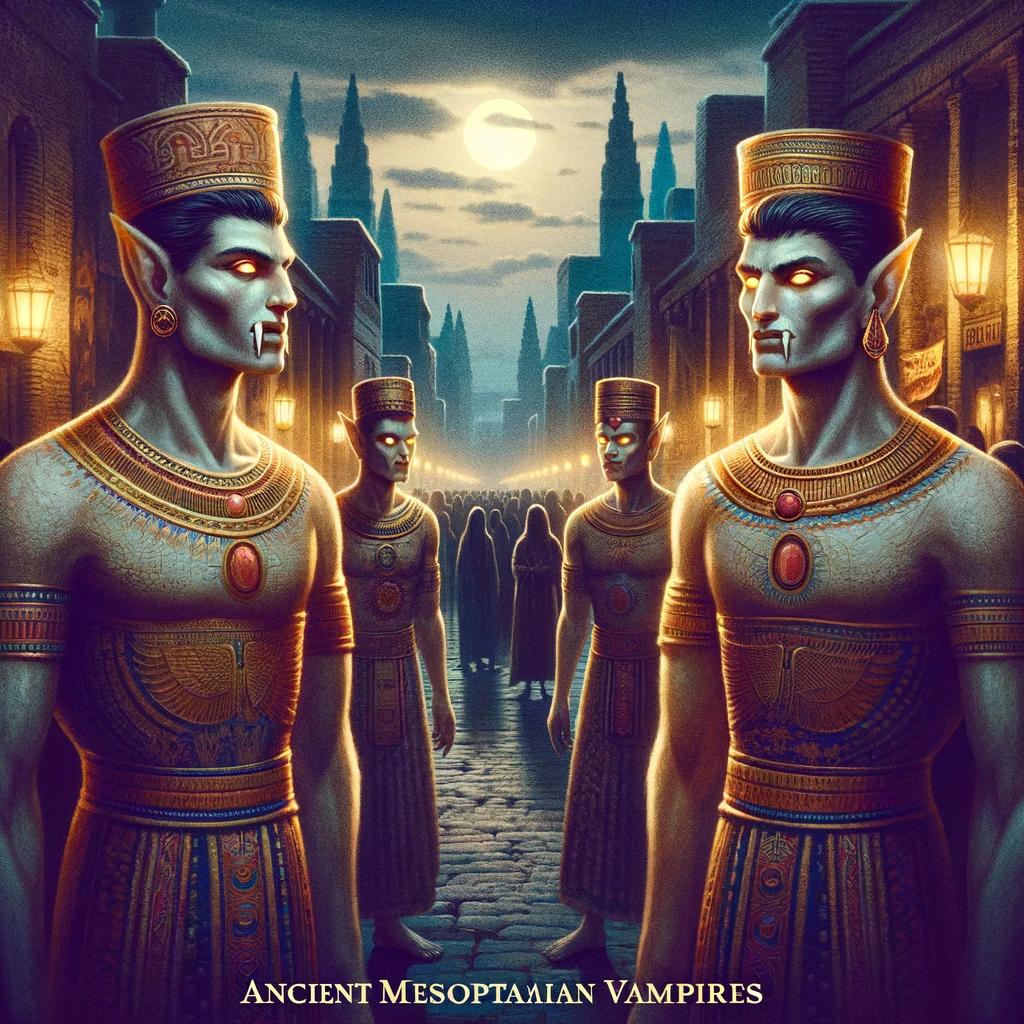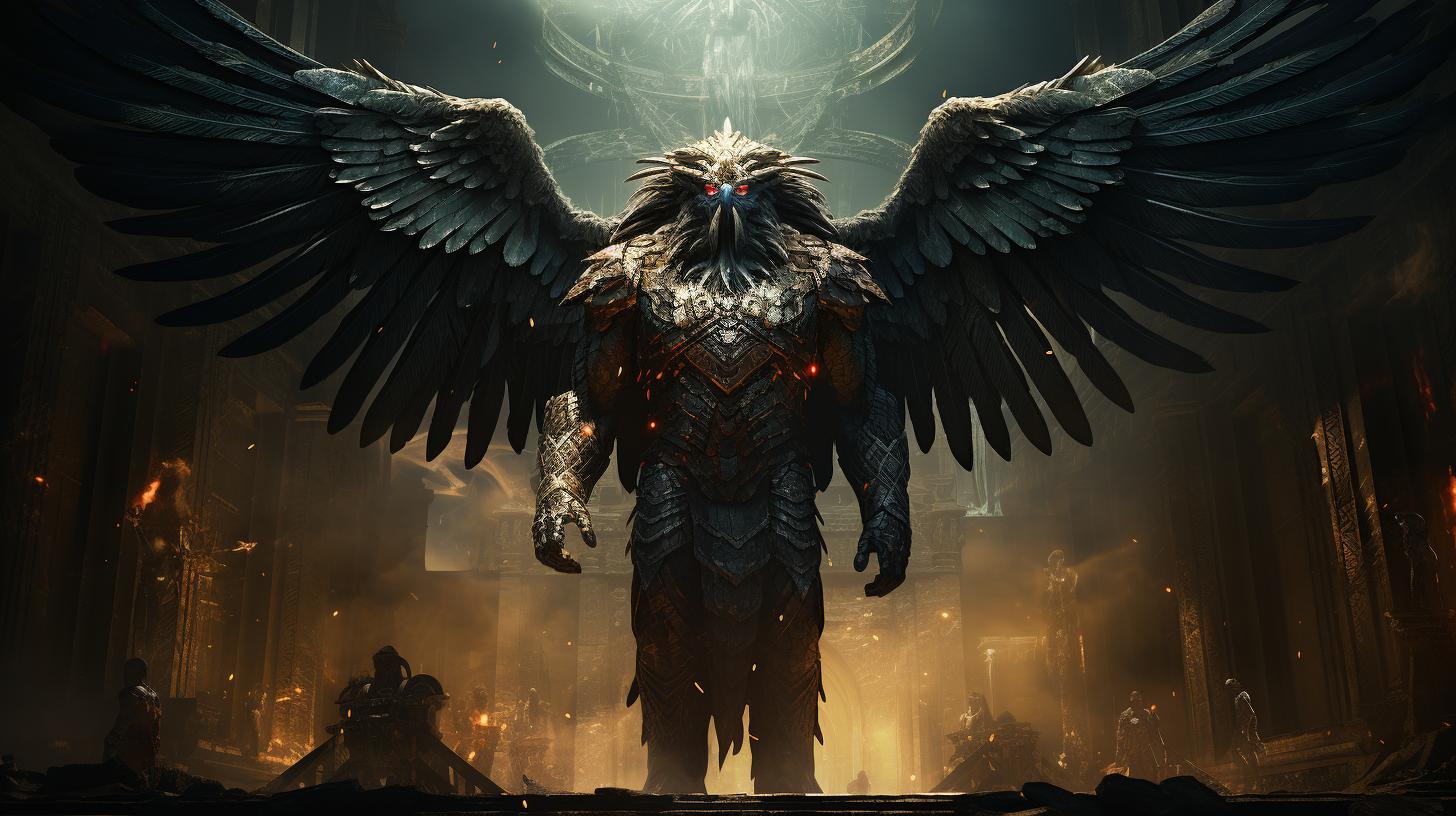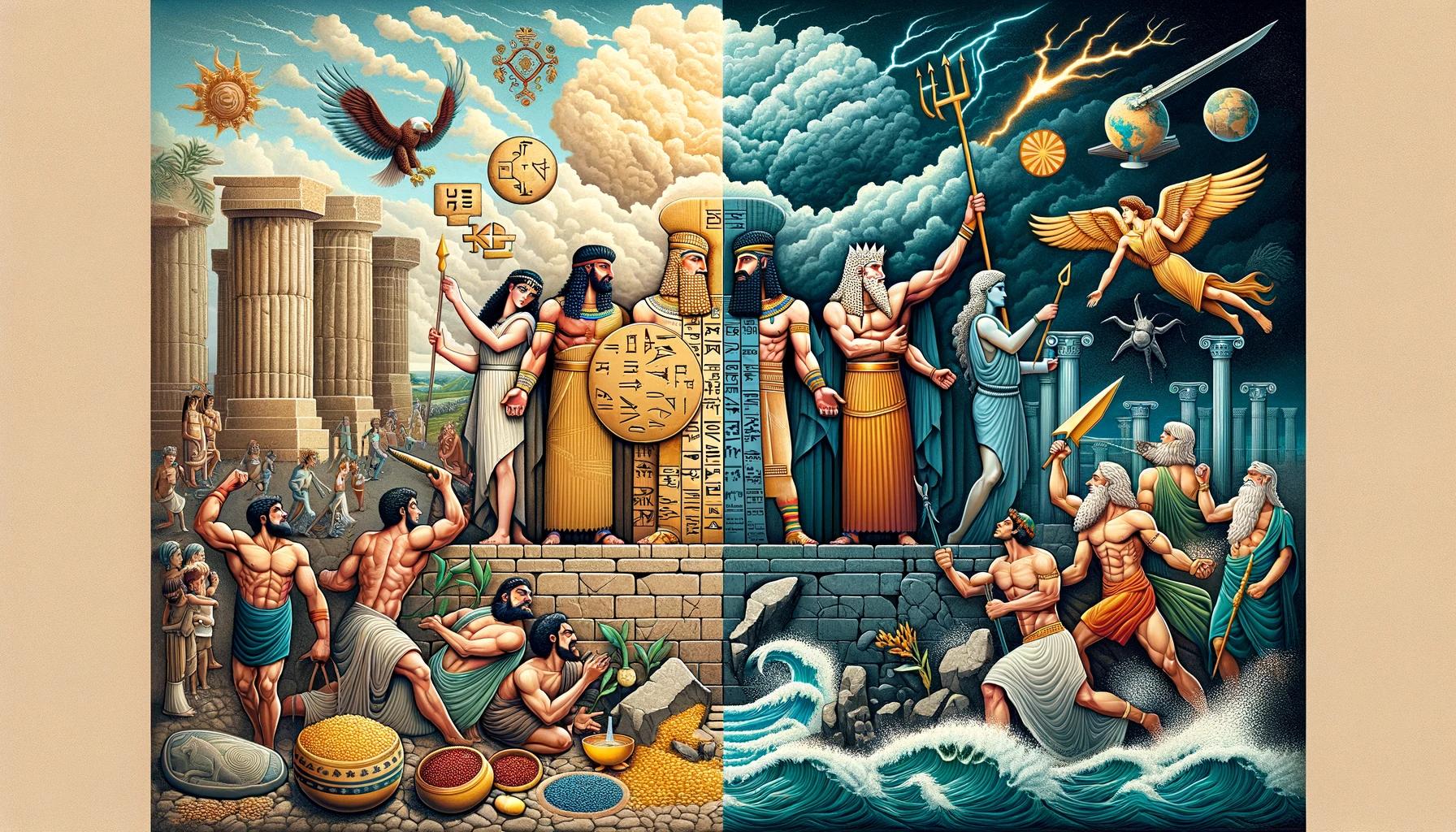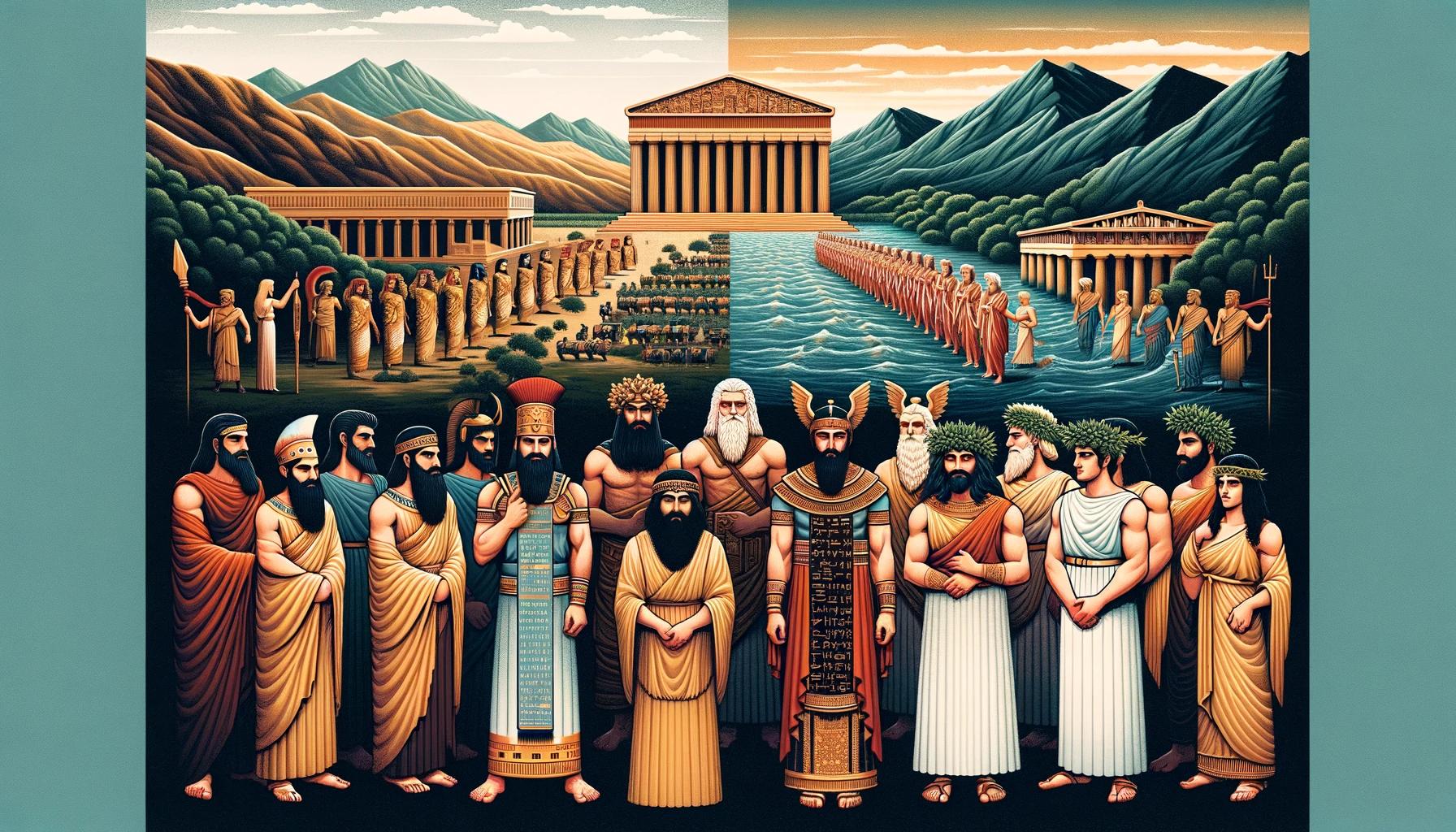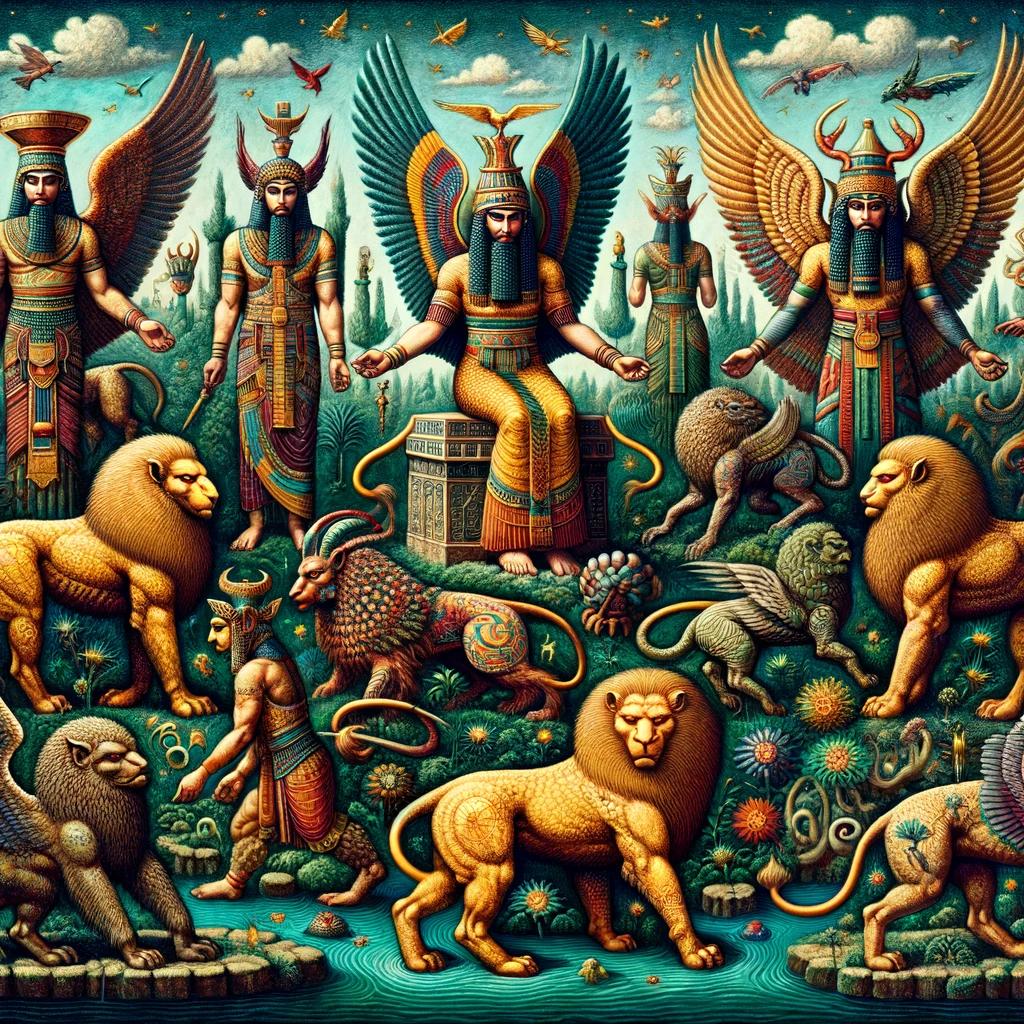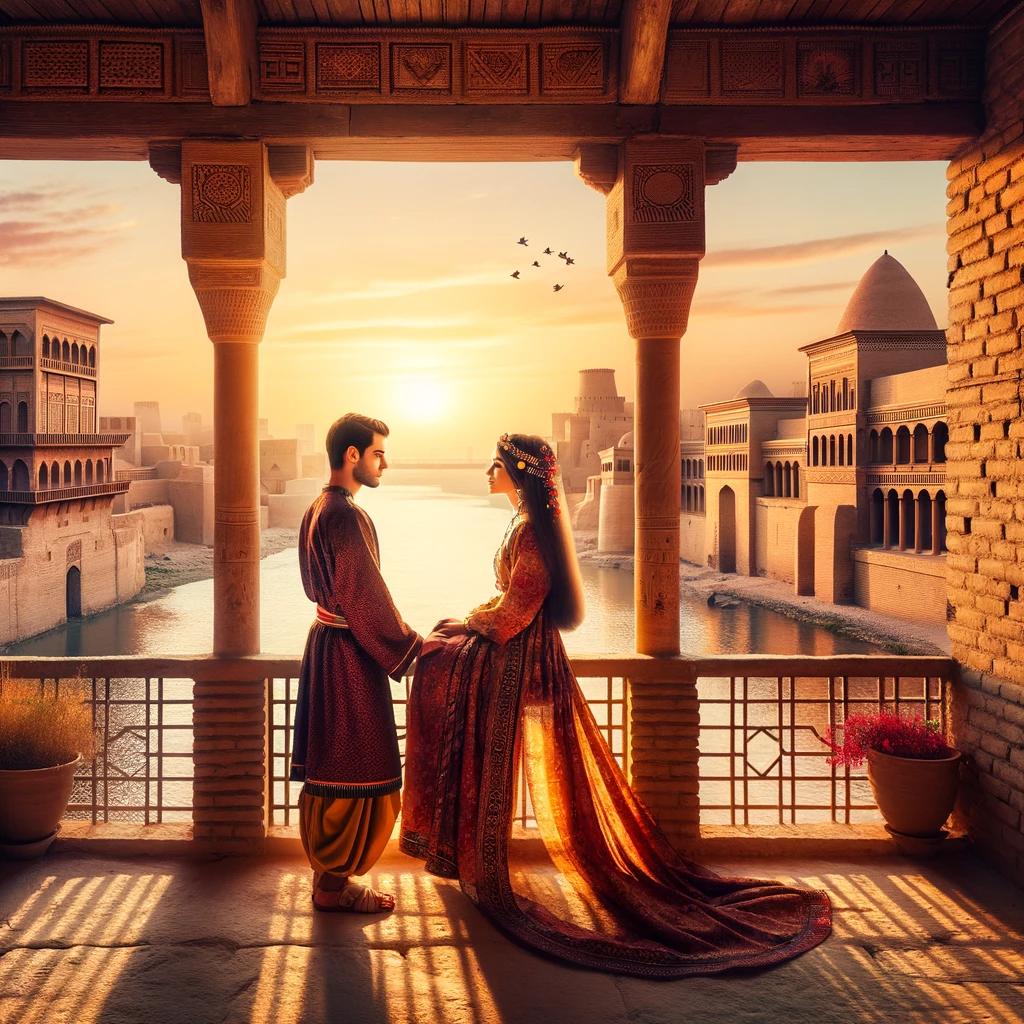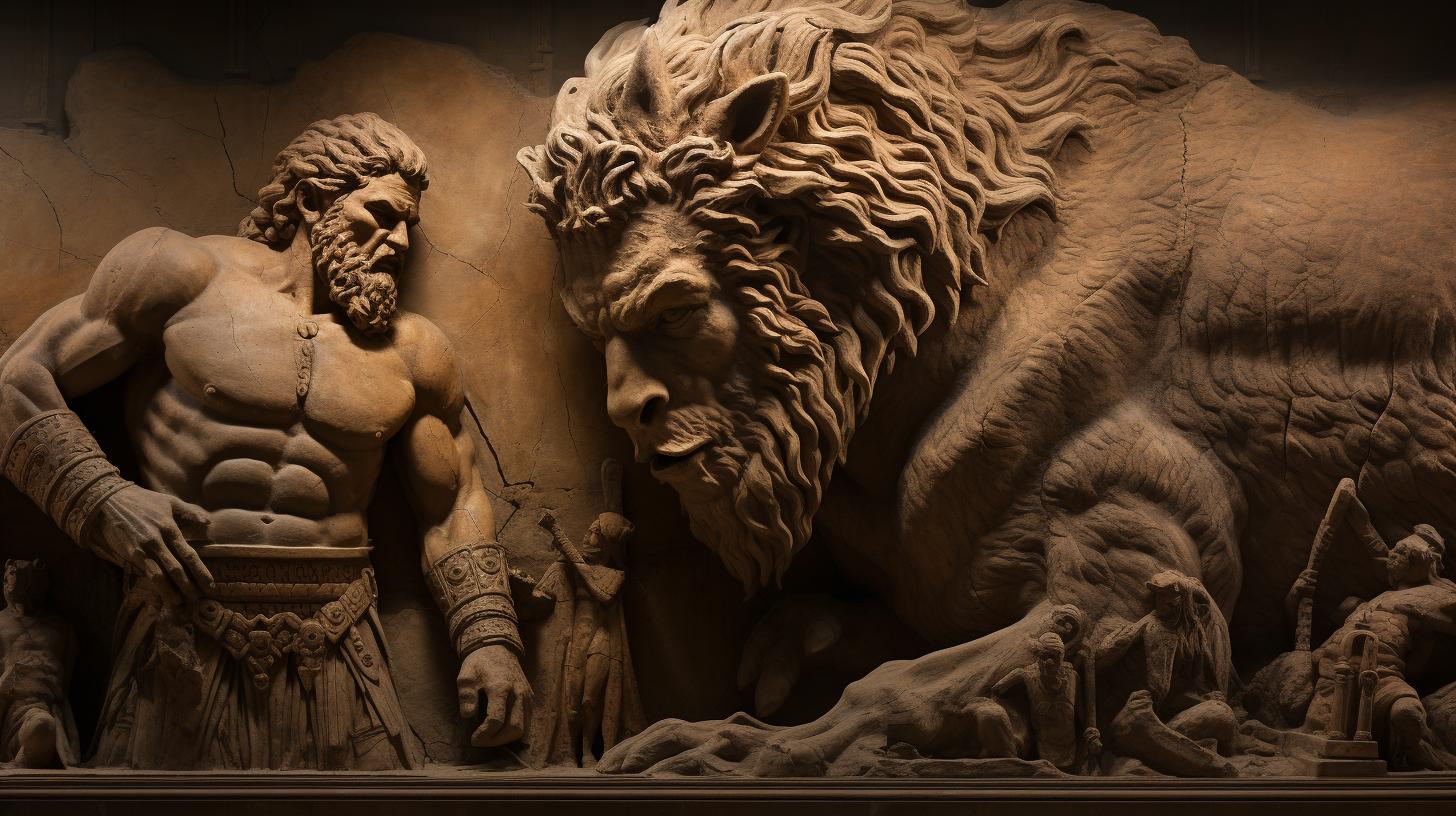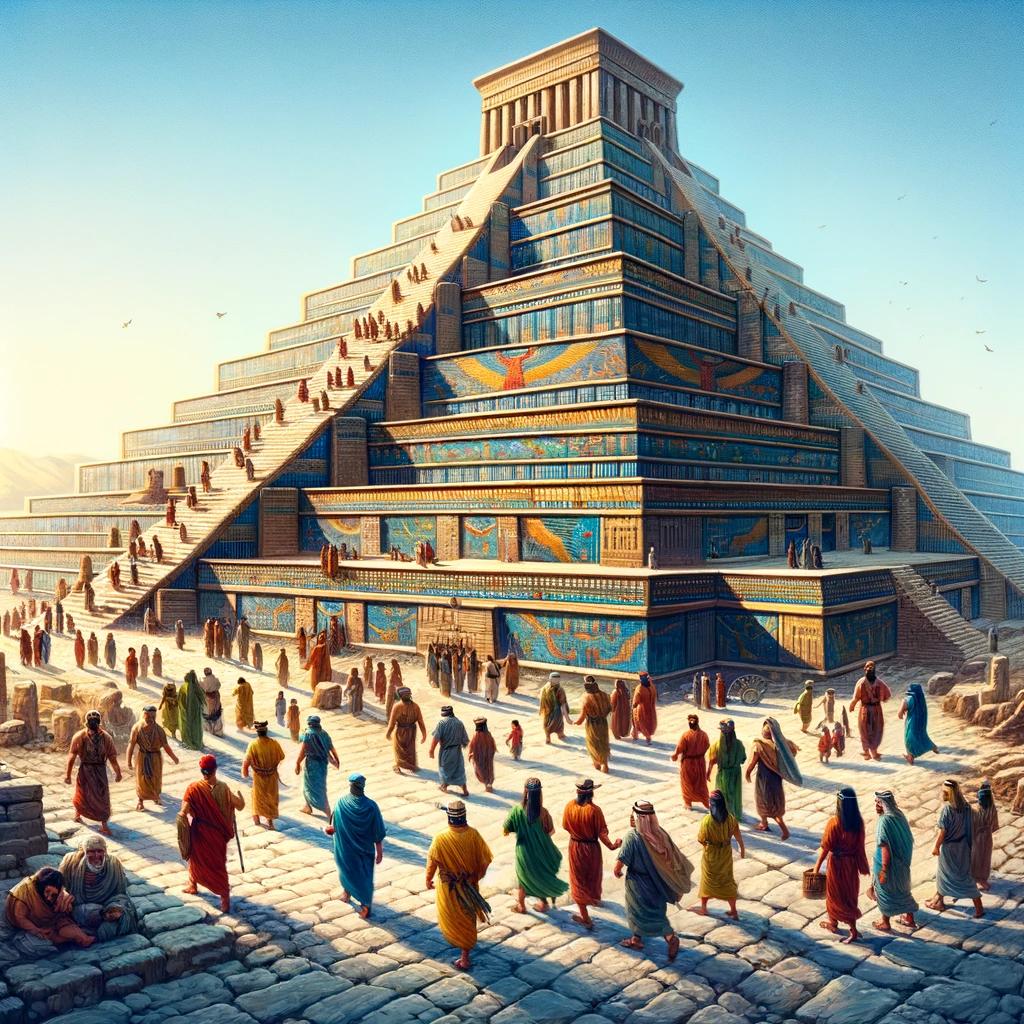Unveiling the Enigma: Mesopotamian Vampires Throughout History
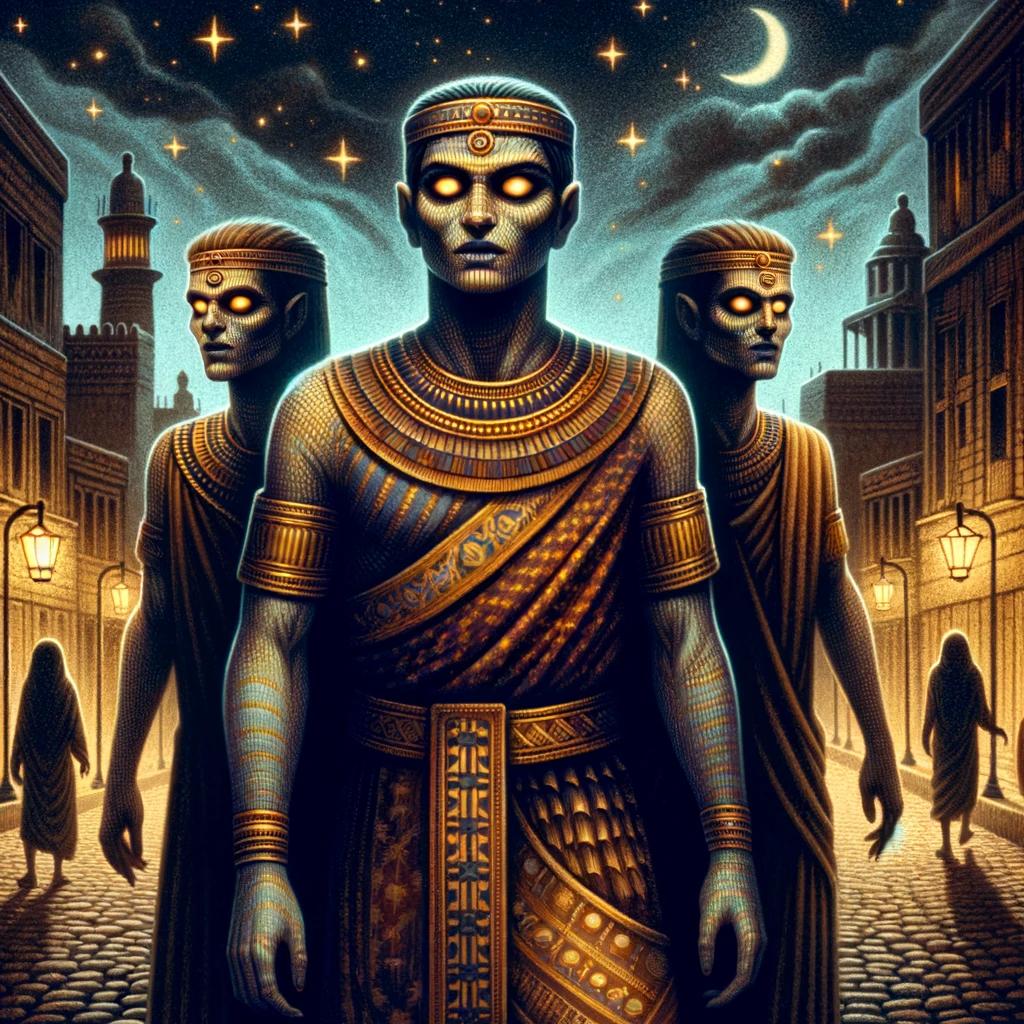
Mesopotamian Vampires have intrigued and terrified people throughout history. Recent research reveals that vampire beliefs were not limited to Slavic regions but existed in diverse cultures, including Mesopotamia. This article delves into the origins, variations, and mythical entities related to Mesopotamian vampires.
It also explores how these vampire legends influenced other ancient cultures, such as Greece, and their impact on European vampire folklore. Additionally, the cultural significance of Mesopotamian vampires and the debunking of popular vampire myths will be explored, shedding light on this enduring phenomenon.
Understanding Vampire Folklore
The legends of Mesopotamian vampires have intrigued and terrified people throughout history. Contrary to popular belief that vampirism was limited to Slavic regions and cultures like the Russians, Bohemians, and Balkans, recent research has unveiled its presence in various cultures and races around the world.
Origins of Vampire Beliefs in Mesopotamia
Mesopotamia, the ancient land between the Tigris and Euphrates rivers, is known for its rich mythology and supernatural beings. Within its folklore, mention is made of different types of vampires. Among them are the Ekimmu, although there are limited details about their specific characteristics.
Another group is the Uruku/Utukku, their descriptions also remain scarce.
Vampire beliefs in Mesopotamia can be traced back to ancient times when they were deeply ingrained in the cultural and religious beliefs of the region.
These beliefs likely emerged from the fear and fascination surrounding death, as well as the desire to explain mysterious phenomena associated with the undead.
Role of Vampires in Mesopotamian Culture
Vampires held a significant place in Mesopotamian culture, often associated with demonic entities and spirits.
One prominent group is the Succubi/Incubi, beings that could take on human form to seduce and feed on the life energy of their victims through dreams. They represented the allure and danger of forbidden desires, serving as cautionary figures in Mesopotamian society.
Additionally, Mesopotamian mythology features multiple demons and entities related to the vampire realm, including Lamashtu and the Gallu. These feared entities were known for their insatiable consumption of human flesh and blood.
The figure of Lilith, considered a demon and associated with vampiric tendencies, also finds mention in Mesopotamian mythology.
The presence of vampire legends was not confined to Mesopotamia alone but spread to other ancient cultures and societies throughout different periods.
Ancient Greece, for instance, had its precursors to modern vampires, including Empusa, Lamia, and the striges, who also fed on human flesh and blood.
Across various mythologies, vampires have been associated with demons and malevolent spirits, often attributed to their consumption of blood.
From Arabic ghuls to the Egyptian goddess Sekhmet, the connection between vampires and blood has persisted in different cultural traditions.
The belief in vampires caused widespread hysteria in some areas, leading to the public execution of individuals accused of being vampires.
These stories and legends flourished in southeastern Europe, particularly in Transylvania, where oral traditions from diverse ethnic groups were compiled.
In summary, the presence of vampire legends extends across different cultures throughout history, from Mesopotamia and ancient Greece to medieval and modern Europe.
Vampires have been intertwined with demons, malevolent spirits, and entities feeding on human blood and flesh. Though the specific details of Mesopotamian vampires may be scarce, their presence and the accompanying fear endured for over 9,000 years.
The Lilitu: Mesopotamian Female Vampires
The Lilitu are prominent figures in Mesopotamian vampire folklore. These female vampires are shrouded in mystery and have captivated the imaginations of people for centuries. Legends and myths surrounding the Lilitu depict them as seductive and deadly creatures that prey on unsuspecting victims.
Legends and Myths Surrounding the Lilitu
According to ancient Mesopotamian tales, the Lilitu are nocturnal beings who roam the night, seeking their next victim. They are said to have enchanting beauty and possess the ability to shape-shift, enabling them to assume different forms to lure their prey.
It is believed that the Lilitu primarily target men, using their seductive charms to entice and drain their life force. They are known to visit sleeping individuals, often appearing as sensual dream figures that feed on the energy of their unsuspecting victims.
These enchantresses are also associated with causing nightmares and disrupting sleep, further adding to the fear and fascination surrounding them. It was said that those who encountered a Lilitu would wake up drained and weakened, devoid of vitality.
Influence of Lilitu in Mesopotamian Society
The influence of the Lilitu extended beyond mere legends and myths. In Mesopotamian society, these vampiric entities were believed to be responsible for a range of calamities and misfortunes. They were thought to bring disease, infertility, and even death.
As a result, the fear of encountering a Lilitu had a significant impact on the daily lives of the Mesopotamian people. Various protective rituals and amulets were employed to ward off these vampiric creatures and safeguard individuals from their malevolent influence.
The belief in the Lilitu and their abilities to feed on life force and bring harm emphasized the importance of vigilance and caution in Mesopotamian culture. This fear and wariness surrounding the Lilitu further perpetuated the mystique and enduring legacy of these ancient female vampires.
Mesopotamian Vampire Variations
The ancient land of Mesopotamia is home to various types of vampires, each with their own intriguing characteristics and tales.
Ekimmu: The Mysterious Vampires
Among the vampire beings of Mesopotamia, the Ekimmu stand out as enigmatic figures. Unfortunately, detailed information about the specific characteristics of these vampires is scarce. However, ancient texts suggest that the Ekimmu were restless spirits that roamed the earth, often seeking relief or vengeance.
The legends surrounding the Ekimmu portray them as ethereal and elusive creatures, believed to have the ability to possess the living and bring about misfortune. These mysterious vampires were feared for their potential to cause sickness, death, and general unrest.
Uruku/Utukku: Shrouded in Darkness
Another type of vampire in Mesopotamia is the Uruku or Utukku. Similar to the Ekimmu, descriptions of these creatures are not abundant. However, it is believed that the Uruku/Utukku were associated with darkness and malevolence, lurking in the shadows to prey on unsuspecting victims.
These dark vampiric entities were thought to possess supernatural abilities and infiltrate the realm of the living under the cover of night. They were feared for their ability to instill terror and drain the life force from their victims.
Succubi/Incubi: Seductive and Elusive
One fascinating aspect of Mesopotamian vampire lore is the presence of Succubi and Incubi. These captivating beings would assume human form to lure individuals into their seductive grasp, primarily targeting their victims in dreams.
Succubi, often portrayed as female, and Incubi, typically depicted as male, were believed to feed on the vital energy of their prey while they slept. They would tempt their victims with irresistible desire, draining their life essence over time.
The allure and elusiveness of Succubi and Incubi fascinated and terrified Mesopotamian society, leading to tales of their encounters being passed down through generations.
Mythical Entities Related to Vampires
Discover the terrifying mythical entities in Mesopotamian vampire folklore, whose presence struck fear into the hearts of ancient civilizations.
The Grisly Gallu and Lamashtu
The Gallu and Lamashtu were among the most feared beings in Mesopotamian mythology. The Gallu, often described as demons, possessed an insatiable appetite for human flesh and blood.
These grotesque creatures haunted the night, terrorizing villages and instilling horror into the hearts of the Mesopotamian people. Lamashtu, another dreaded entity, was known for her insidious nature and her insatiable thirst for blood.
She was believed to prey on both children and mothers, causing unimaginable suffering and grief.
Lilith: Queen of Demons
One of the most powerful entities in Mesopotamian vampire folklore was Lilith, the Queen of Demons. Often depicted as a seductive and dangerous figure, Lilith was a force to be reckoned with.
She was believed to be the instigator of nightmares and nocturnal emissions, preying on vulnerable individuals in their sleep. Mesopotamian myths portrayed Lilith as a relentless temptress, tempting men with her beauty and devouring their life force.
The presence of these mythical entities in Mesopotamian vampire lore highlights the depth of fear and superstition that permeated ancient society. The tales of the Grisly Gallu, Lamashtu, and Lilith served as cautionary tales, warning of the dangers that lurked in the shadows.
Mesopotamian Vampire Legends in Other Cultures
Vampire Folklore in Ancient Greece
As the allure of vampire legends spread beyond Mesopotamia, they found their way into the ancient Greek culture. In Greek mythology, precursor figures to modern vampires emerged, such as Empusa, Lamia, and the striges.
These creatures also fed on human flesh and blood, instilling fear and fascination among the ancient Greeks. The intermingling of vampire folklore between Mesopotamia and Greece showcases the transcultural nature of these dark legends.
Mesopotamian Influence on European Vampires
The influence of Mesopotamian vampire myths extended beyond ancient Greece and made a lasting impact on European vampire folklore. Through trade routes and cultural exchanges, Mesopotamian legends reached various European societies, particularly during the medieval and modern eras.
The fear and fascination with these blood-drinking creatures persisted in different forms, giving rise to diverse vampire traditions in regions like Transylvania. The adaptation and assimilation of Mesopotamian vampire beliefs demonstrate their enduring and widespread influence.
In conclusion, the presence of Mesopotamian vampire legends expanded beyond their origins. These ancient myths influenced cultures as diverse as ancient Greece and Europe, leaving an indelible mark on vampire folklore.
The interconnectedness of vampire narratives demonstrates the enduring power of these dark creatures throughout history. As we delve into the variations and cultural significance of Mesopotamian vampires, we uncover a rich tapestry connecting ancient civilizations and modern society.
Cultural Significance of Mesopotamian Vampires
Vampire Symbolism and Fear in Mesopotamian Society
Within Mesopotamian society, vampires held a significant place in the realm of symbolism and fear. These supernatural beings represented dark and malevolent forces that lurked in the shadows, striking fear into the hearts of the people.
Mesopotamians believed that vampires possessed the power to drain the life force and vitality of individuals, leaving them weakened and vulnerable.
Vampires were seen as embodiments of darkness, chaos, and death, often associated with negative aspects of human existence.
Their presence instilled terror, as Mesopotamians believed they could bring about sickness, misfortune, and even death. The fear of vampires permeated the daily lives of individuals, shaping their behaviors and rituals.
Protective charms and amulets were worn to ward off these malevolent creatures, reinforcing the pervasive fear that surrounded them.
The Role of Blood in Vampire Lore
The symbolism of blood played a central role in Mesopotamian vampire lore. Blood was considered the essence of life, and vampires were believed to thirst for it relentlessly. Mesopotamians associated blood with vitality, strength, and the life force that connected humans to the divine realm.
The vampiric consumption of blood represented a violation of the sacred boundaries between the living and the dead, breaching the natural order. It symbolized the loss of life and the corrupting influence of the supernatural.
The connection between vampires and blood formed the basis for the enduring mythologies and fears surrounding these creatures.
Impact of Mesopotamian Vampire Myths on Modern Culture
The mythologies and legends surrounding Mesopotamian vampires have had a lasting impact on modern culture. Their portrayal in literature, film, and popular media continues to captivate audiences worldwide. From classic vampire novels to modern vampire-themed TV shows, the influence of Mesopotamian vampire concepts is evident.
The themes of seduction, immortality, and the interplay between darkness and light that originated from Mesopotamian vampire myths persist in contemporary vampire lore. The enduring allure and fascination with vampires owe much to their rich history in Mesopotamian society and their subsequent adaptation and reinterpretation by other cultures throughout the centuries.
Mesopotamian vampires, with their association with demons, bloodlust, and supernatural power, continue to captivate the imagination and evoke a sense of mystery and intrigue in the modern world.
Debunking Popular Vampire Myths
Separate Fact from Fiction: Vampire Abilities
When it comes to vampire abilities, popular culture has often exaggerated or misinterpreted their capabilities.
Let’s separate fact from fiction and explore what is true about vampire abilities.
Immortality:
Contrary to popular belief, vampires are not immortal beings who live forever. While they may have extended lifespans due to their feeding habits, they are not invulnerable to death.
Superhuman Strength and Speed:
Vampires are commonly associated with exceptional strength and speed that surpasses that of humans.
While they do possess enhanced physical attributes, it is important to note that their abilities are not superhuman in nature.
Immunity to Sunlight:
Vampires are often depicted as beings who perish upon exposure to sunlight. However, the belief that vampires are completely immune to sunlight is a myth. While sunlight may weaken them, it does not automatically lead to their demise.
Transformation into Bats:
Contrary to popular portrayals, vampires cannot transform themselves into bats at will. Such shapeshifting abilities are purely fictional and exist only in works of fantasy.
The Role of Blood in Vampire Lore
Blood holds a significant role in vampire lore, but misconceptions often surround its significance.
Let’s examine the true role of blood in vampire mythology.
Feeding on Blood:
Vampires are commonly associated with feeding on human blood. While blood consumption is a characteristic attributed to vampires, it is not their only source of sustenance. In some legends, vampires are believed to feed on various forms of life force or psychic energy.
Immortality through Blood:
Contrary to popular belief, vampires do not gain immortality solely by drinking blood. Immortality is not achieved through blood consumption alone but is often a result of other mythical circumstances or supernatural abilities.
Blood Contracts and Curses:
In vampire mythology, blood contracts and curses play a role in binding individuals to vampires or in empowering vampires with certain abilities. However, these concepts should be understood within the context of folklore and not treated as factual.
- Myth: Silver and Garlic
- Myth: Vulnerability to Religious Symbols
- Myth: Transformation into Mindless Creatures
In conclusion, debunking popular vampire myths allows us to separate fact from fiction. Vampires do possess certain abilities and have a connection to blood, but many of the commonly held beliefs surrounding their traits and vulnerabilities are exaggerated or based on fictional interpretations.
Understanding the truth behind these myths is crucial in appreciating the rich folklore surrounding Mesopotamian vampires and their enduring influence on popular culture.
.











